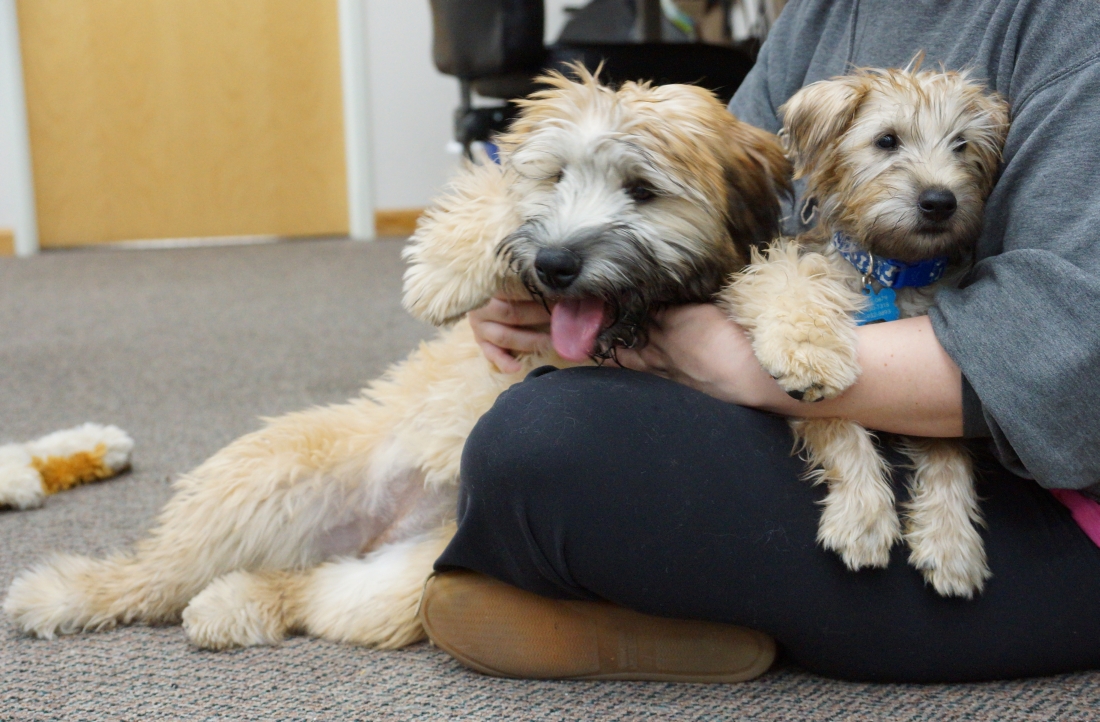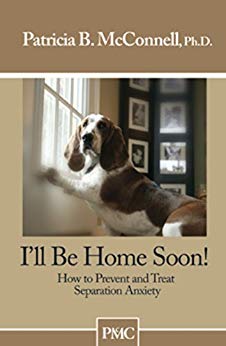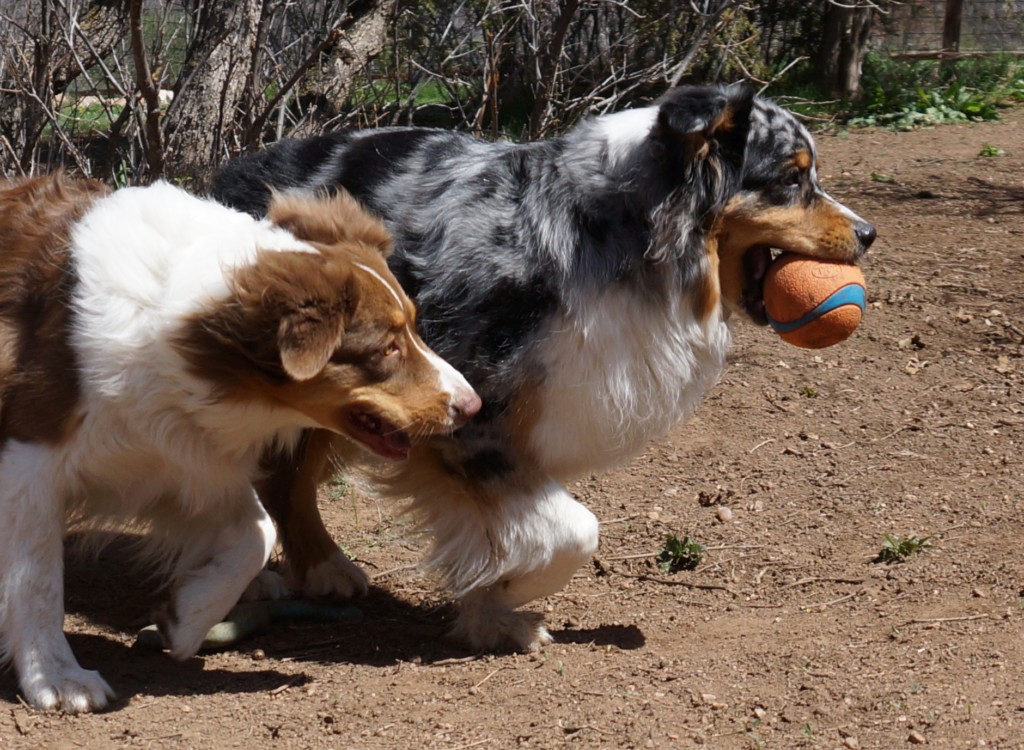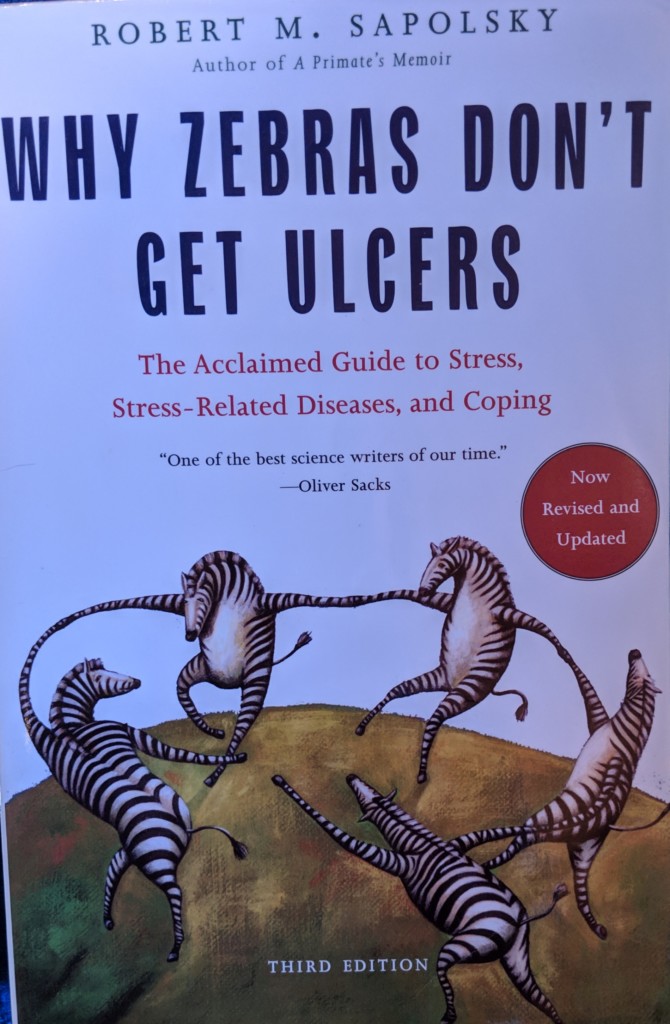DOG TRAINING OFFERED IN-PERSON AND ONLINEOur dog training services are delivered in almost any format that meets your needs. We have GROUP CLASSES at our indoor and outdoor facilities on our farm, ONLINE LIVE STREAMING classes, and SELF-PACED VIDEO-BASED training through our Online Dog Training Course. Our PRIVATE TRAININGS can be done in-home, outside, in public dog-friendly locations, at our facility on our farm, online via phone or video conferencing and through email. |
The better I am able to understand dogs, the better trainer I will be and the better I will be able to help my clients understand and relate to their own dogs. One topic of interest for me is emotions in dogs and other animals. Since we can’t really know what anyone else (humans included!) is thinking or feeling, we can only speculate. But the more we learn, the more accurate we will be in making those speculations.
A while back, I had read Patricia McConnell‘s For the Love of a Dog: Understanding Emotion in You and Your Best Friend. Recently, I read two more books focusing on emotions in animals. One was Jeffrey Moussaieff Masson‘s When Elephants Weep: The Emotional Lives of Animals. The other was Marc Bekoff’s The Emotional Lives of Animals: A Leading Scientist Explores Animal Joy, Sorrow, and Empathy – and Why They Matter.
If you’ve never read any of these books, I recommend reading at least one of them when you have some spare time. Working with clients, I often hear emotions being assigned to dogs that might or might not be true. However, these are often used to blame the dog for conspiring to do something to the person. I think we do our dogs a disservice when we assume they are mad at us or being spiteful when they soil in the house, shred a valued object or other things that frustrate and upset the human side of the partnership. More often than not, it is highly unlikely that the dog is doing any of these things to be spiteful or express anger toward us. I believe it’s important to understand and acknowledge emotions in animals, but we create unnecessary conflict between us when we assign emotions that probably are not there.
The flip side is when people assign emotions to their dogs thinking something is far more upsetting to their dog than it really is. In these situations, it is often the person’s feelings themselves that they are projecting onto their dogs. For example, I sometimes will recommend no longer allowing the dog in bed if there are issues, such as not allowing a spouse into the bed once the dog is there. People assume the dog’s feelings will be hurt if the dog is not allowed in the bed any longer. In reality, most dogs adapt very easily to the new rules. It’s the people who have a hard time adjusting!
While I think it’s a good thing that we acknowledge our dogs’ emotions (rather than assuming they can’t “feel” anything as some people do), I think we sometimes create additional problems by over analyzing and assigning emotions based on our own feelings that most likely are not what the dog is feeling.
Our goal is to positively impact the lives of as many dogs and their families as we can, in part through our extensive library of video, infographics and text articles. |










Leave A Comment